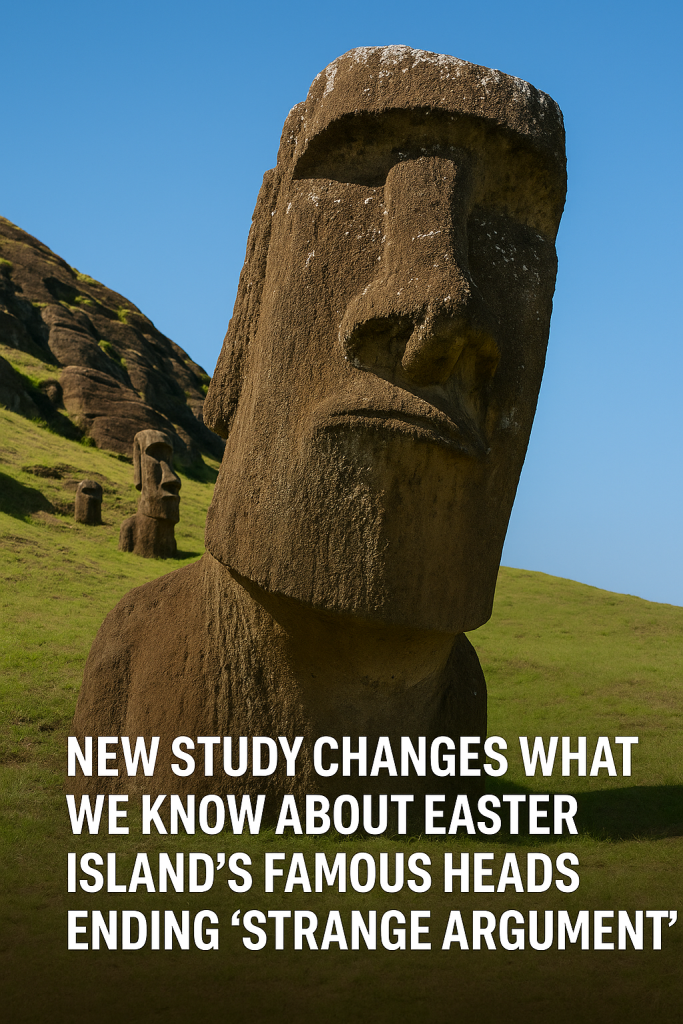For centuries, the mysterious stone heads of Easter Island—known as moai—have captivated archaeologists and enthusiasts alike, inspiring countless theories about their origin, purpose, and the society that created them. Now, a groundbreaking study published in 2024 is reshaping our understanding of these enigmatic sculptures, bringing fresh clarity to a debate that has long puzzled experts around the globe.
The Moai Mystery
Easter Island’s moai statues are among the most extraordinary archaeological wonders on Earth. These colossal monolithic figures, some nearly 30 feet tall and weighing up to 75 tons, were carved from volcanic rock centuries ago by the Rapa Nui people. Despite extensive research, many aspects of their construction and transportation remained uncertain—until now.
Until recently, experts grappled with conflicting hypotheses about how the moai were moved across the island and why their heads appeared disproportionately large compared to their bodies. This “strange argument” over moai functionality and construction sparked debates stretching back decades, with ideas ranging from complex crane-like devices to extensive labor networks or even supernatural assistance.
Revolutionary Findings Challenge Old Assumptions
The latest study, conducted by an international team of archaeologists and engineers, utilized advanced 3D modeling, geochemical analysis, and ethnographic studies to shed new light on the moai’s construction and movement. Their findings reveal that the moai were ingeniously transported upright along designated pathways using a sophisticated system of ropes and controlled rocking motions—contradicting previous theories that posited horizontal movement on sledges or rollers.
Furthermore, the research directly addresses the debated proportions of the moai heads. It turns out the oversized heads were not just stylistic choices; they symbolized important social and spiritual elements deeply significant to the Rapa Nui culture. These heads encapsulate representations of ancestral spirits, reinforcing the statues’ role as guardians and cultural icons.
Ending Centuries of Bafflement
This new evidence effectively ends the “strange argument” that has long bogged down Easter Island moai research. By merging technical analysis with a refined interpretation of Rapa Nui oral histories, the study provides a holistic understanding of how and why these remarkable figures were constructed and positioned.
Perhaps most strikingly, the study highlights the ingenuity and resilience of the Rapa Nui people, whose remarkable engineering skills allowed them to create and erect these massive sculptures without modern technology, all while living in a relatively isolated environment.
Broader Impacts on Archaeology and Cultural Heritage
This breakthrough not only enriches the narrative of Easter Island’s past but also contributes to broader archaeological knowledge about prehistoric island communities and their technological capabilities. The findings encourage a reevaluation of similar megalithic sites worldwide and demonstrate the power of combining technology with traditional ecological and cultural insights.
As scholars continue to piece together the complex history of the moai, the new study invites the public to appreciate the statues not merely as mysterious stone heads but as profound cultural expressions—testaments to human creativity, spirituality, and collaboration under challenging conditions.
In an era when cultural heritage faces growing risks, understanding and preserving the story of the Easter Island moai is more urgent than ever. This study paves the way for future explorations that honor the island’s ancient legacy while inspiring fresh awe around the world.



